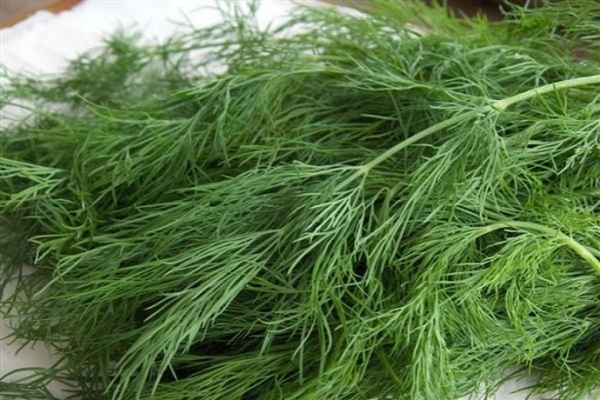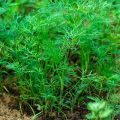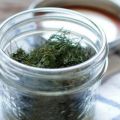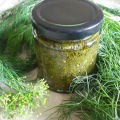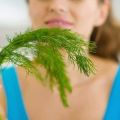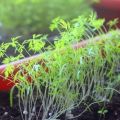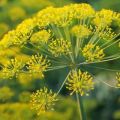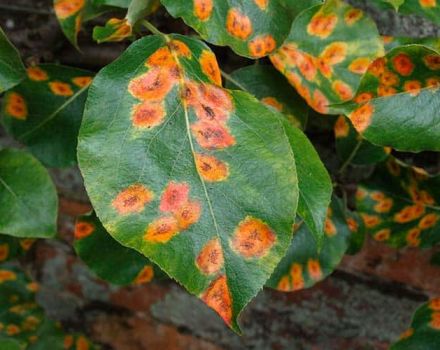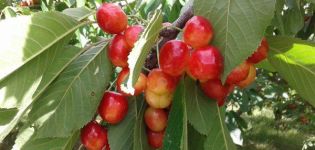Description of the variety of plentiful dill, its characteristics and yield
Plentiful dill speaks for itself. The culture is famous for its good harvest and unpretentiousness to the soil. Even a minimal amount of sown seeds will provide dill until the next season.
Description of the variety
It takes an average of 40 days for the culture to ripen, which gives every reason to attribute the plant to mid-season varieties. Dill emerges within 10-12 days after planting. Shoots grow in length up to 130 cm.
Description of culture:
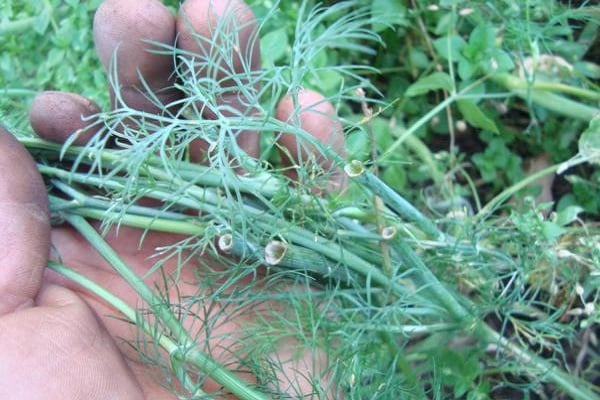
- rich green foliage;
- from 1 square meter, you can harvest 3.5 kg of the crop;
- pronounced taste and aroma;
- juicy greens;
- the mass of useful components in the composition;
- average size of leaves and umbrellas;
- the possibility of long-term storage;
- an average of 20 g of greens is collected from one bush.
The rich-leaved variety is suitable for various uses: freezing, drying, fresh consumption, preparation of medicines.

Growing
Dill does not conflict with plants, so it can be grown next to any garden crops. The only exception is celery. It is not recommended to sow dill in the area where this crop was grown last season.
Dill seeds begin to germinate at 3 degrees Celsius. However, experienced gardeners know that the optimum temperature for a plant is 16-18 degrees. It is better to plant in a well-lit area, although darkened beds are not a contraindication to planting.
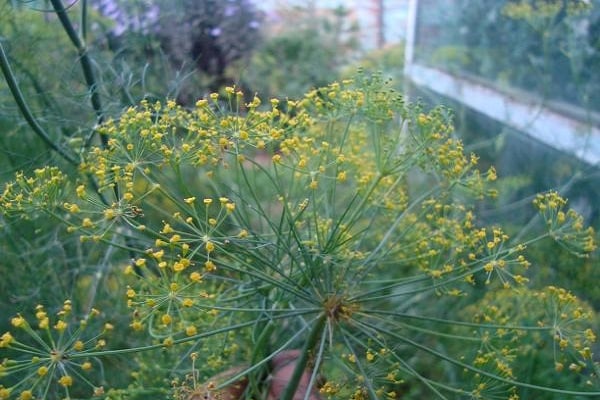
It is recommended to moisten and fertilize the soil before sowing. For feeding, manure, superphosphate and potassium salt are used. Planting occurs in late April - early May, as soon as the soil warms up to the required temperature.
To speed up the germination of seeds, on the eve of planting, they can be soaked for 2 days in an ash solution. Or place in a bag of gauze and dip in warm water (no more than 50 degrees). In this case, the water will have to be constantly renewed and then dried out.
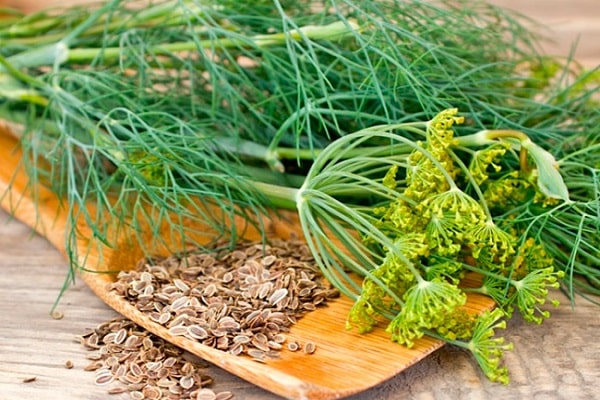
The harvest will be better if you plant it correctly. The optimum distance between seeds is 5 cm. Planting depth is 2 cm. It is better to sow dill in rows, only in this case it will be necessary to thin out the sprouted sprouts.
The leafy varieties of dill are characterized by good germination even under adverse weather conditions.
Note! Dill does not tolerate an acidic environment, so you cannot plant greens on the soil after liming.

Care features
Caring for dill does not require much effort, but every gardener should understand its features. First of all, the shoots that begin to sprout are thinned out. Plants should not be closer than 5 cm from each other.Otherwise, the seedlings will stop developing.
Weeds must be removed on time, as young dill drowns out their growth. It is also important to remember about soil moisture, drought will lead to yellowing of greenery. Watering is best done in the evening, once every 2-3 days.
With the probability of night frosts, the seedlings are covered with polyethylene. Sudden changes in temperature can completely destroy the crop.
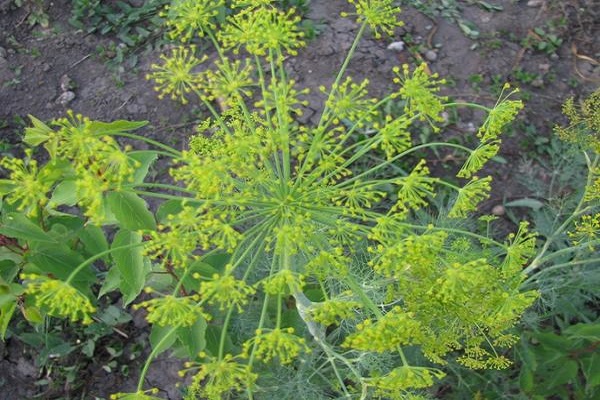
Advantages and disadvantages
Plentiful dill has a number of advantages:
- high yield rates;
- good foliage;
- undemanding to the soil (with the exception of acidic soils);
- unpretentious care;
- does not require preliminary heat treatment before use;
- can be grown with almost all garden crops;
- juiciness and aroma of greens;
- the possibility of long-term storage in several ways.
The disadvantages include intolerance to low temperatures. Even minor frosts can ruin the harvest, so it is recommended to cover the dill with plastic wrap at night.
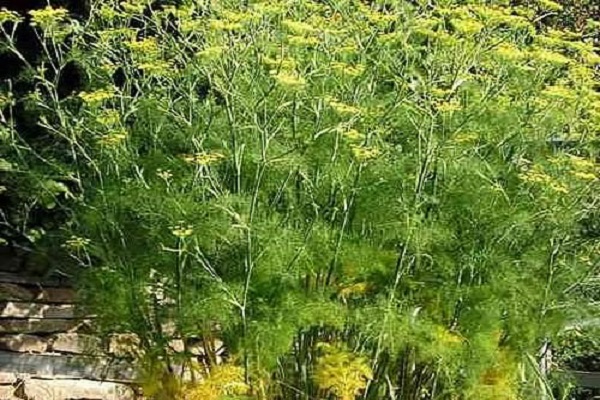
Pests and diseases
Sometimes the plant is exposed to misfortunes. Consider the most common diseases of the variety:
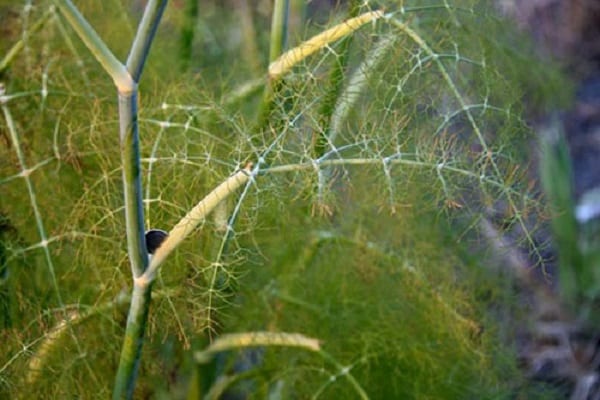
- Peronosporosis. The optimal conditions for the disease are a humid warm climate. First, the outer side of the leaves turns yellow, then the back is covered with a white bloom. Gradually, the lesion spreads to other parts of the plant: shoots, umbrellas. Plants affected by peronosporosis die rather quickly. Soda ash and laundry soap are used to fight the disease. 20 grams of components are diluted in 5 liters of water, after which the affected plants are treated.
- Powdery mildew. It affects plants in any region, even with greenhouse cultivation. As a rule, the disease is preceded by humid warm weather for a long period. The defeat is manifested by a whitish bloom on the leaves, resembling a cobweb. Gradually, the affected area grows and leads to the death of the plant. When signs are found disease dill immediately sprayed with a weak solution of copper oxychloride or potassium permanganate.
- Cercosporosis. A characteristic feature of the disease is the appearance of dark spots with dots on all parts of the dill. When the spores mature, the dill is covered with a dense white bloom. Cercosporosis is also a dangerous disease that, in the absence of timely measures, leads to the wilting of the affected plant. The cure for this disease is copper oxychloride. In 5 liters of water, 20 g of the substance are diluted and the affected plants are regularly sprayed.
- Fusarium wilting. Both infected seeds and high air temperatures or excessive watering can provoke the disease. Initially, the lower leaves are affected, gradually the upper leaves and stem are involved in the pathological process. This is manifested by a reddish-yellow color, which quickly leads to the complete wilting of the dill. At the first manifestations of yellowness or redness, the plants are sprayed with Fundazol or Topsin. The untreated stage of the lesion is easily amenable to such treatment. If it was not possible to save the plant, it is removed from the garden along with the root.
To avoid damage to greens, before planting, it is recommended to soak the seeds in warm water or treat them with a solution of potassium permanganate. Such simple methods will minimize the risks of injury. In order not to provoke the development of infectious diseases of dill, you should not plant the beds closely.

Since greens are consumed fresh, it is not recommended to resort to chemicals for help. It is advisable to take care of disease prevention at the stage of seed preparation.
Collection and storage
When the plant reaches 15 cm, it is harvested for greenery. This is 20-25 days after germination. Before cutting, the greens are sprayed with water. Young dill is kept fresh for several days.Greens are stored in several ways: freezing, drying, conservation.

To dry the greens, they are collected in a bunch, washed in cool water and laid out to dry in a dry place. When it begins to break without effort in the hands, it is folded into fabric bags or poured into a glass jar. The dill, along with the umbrellas, is kept hanging.
Despite the ease of drying, most gardeners prefer to keep their greens frozen. Thus, useful substances are stored in it. The cut parts of the dill are well washed, dried and finely chopped. Then the greens are laid out in plastic bags and sent to storage in the freezer.
